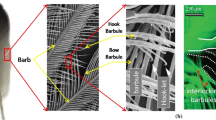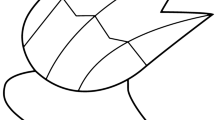Abstract
This paper analyzes fender selection process in berth design and focuses on the case of a rigid berth with rubber cone fenders. Fender types and performance comparison methods are studied along with current numerical models. Berth design methods are analyzed with a focus on berthing energy calculation and fender selection. A new approach to determine the required fender capacity is suggested. A finite elements rubber cone model is tested and used in simulations of angular side berthing. Results show that the energy absorbed by the fender can be much higher than what can be calculated with the current berth design method. A new form for the expression of the energy that must be absorbed by the fender during angular berthing impact is suggested.
Similar content being viewed by others
References
Trelleborg A B. Fender design: Trelleborg marine systems [M]. Trelleborg, Sweden: Trelleborg A B, 2011.
Bruijn E. Plastic design of breasting dolphins [D]. Rotterdam, Holland: Faculty of Civil Engineering and Geosciences, Hydraulic Engineering, Delft University of Technology, 2005.
BS 6349-4, Maritime structures [S].
Schellin T E, östergaard C. The vessel in port: Mooring problems [J]. Marine Structures, 1995, 8(5): 451–479.
Elzinga T, Iribarren J R, Jensen O J. Movements of moored ships in harbours [J]. Coastal Engineering Proceedings, 2011, 1(23): 3216–3229.
Thyssen Mannesmann Handel. Dolphins—Hamburg-Finkenwerder berthing basin for large vessels [P]. Germany, JOB 0185/03.02/TMH, 2012.
Trelleborg A B. High performance fenders: Trelleborg marine systems [M]. Trelleborg, Sweden: Trelleborg A B, 2011.
FenderTeam A G. Fender design manual [M]. Hamburg: Fender Team A G, 2013.
MarCom Working Group 33. Guidelines for the design of fender systems [M]. Brussels, Belgium: Transportation Research Board, 2002.
FenderTeam A G. Products [M]. Hamburg: Fender Team A G, 2012.
Koo B J, Kim M H. Global analysis of FPSO and shuttle tankers during side-by-side offloading [C]//The Minerals Management Service Under the MMS/OTRC Cooperative Research Agreement. Texas, USA: Offshore Technology Research Center (OTRC), 2006.
Erhart T. Review of solid elements formulations in LS-Dyna: Properties, limits, advantages, disadvantages [C]//LS-Dyna Forum. Stuttgart, Germany: Entwickler, 2011.
Gladman B. Ls-Dyna keyword user’s manual [M]. Livermore California: LSTC. 2007.
Oscar J, Centeno G. Finite element modeling of rubber bushing for crash simulation—Experimental tests and validation [D]. Lund, Sweden: Structural Mechanics, Lund University, 2009.
Du Bois P A. A simplified approach to the simulation of rubber-like materials under dynamic loading [C]//4th European LS-DYNA Users Conference. Ulm, Germany: LS-DYNA, 2003.
Del Prete A, Papadia G, Manisi B. Computer aided modelling of rubber pad forming process [J]. Key Engineering Materials, 2011, 473: 637–644.
Schmidt J D, Faller R K, Sicking D L, et al. Development of a new energy—Absorbing roadside/median barrier system with restorable elastomer cartridges [C]//Midwest Roadside Safety Facility. Lincoln, USA: University of Nebraska, 2013.
Ramezani M, Ripin Z M, Ahmad R. Computer aided modelling of friction in rubber-pad forming process [J]. Journal of Materials Processing Technology, 2009, 209: 4925–4934.
Dao M H, Xu H, Chan E S, et al. Numerical modeling of extreme waves by smoothed particle hydrodynamics [J]. Natural Hazards and Earth System Science, 2011, 11: 419–429.
Eswaran M, Virk A S, Saha U K. Numerical simulation of 2D and 3D sloshing waves in a regularly and randomly excited container [J]. Journal of Marine Science and Application, 2013, 12: 298–314.
Jonsson P. Smoothed paticle hydrodynamics in hydropower applications—Modeling of hydraulic jumps [D]. Luleå, Sweden: Universitetstryckeriet, Luleå University of Technology, 2013.
Author information
Authors and Affiliations
Corresponding author
Additional information
Foundation item: the National Natural Science Foundation of China (Nos. 41172251 and 41330633)
Rights and permissions
About this article
Cite this article
Eskenazi, J., Wang, Jh. Analysis of angular side berthing against a rubber Cone Fender. J. Shanghai Jiaotong Univ. (Sci.) 20, 571–583 (2015). https://doi.org/10.1007/s12204-015-1664-1
Received:
Published:
Issue Date:
DOI: https://doi.org/10.1007/s12204-015-1664-1




